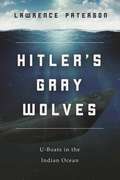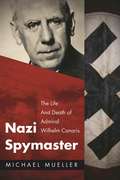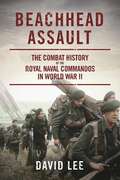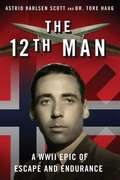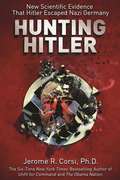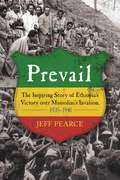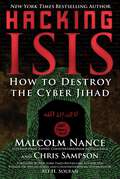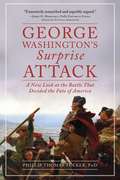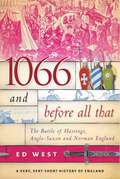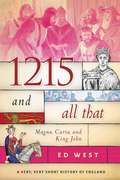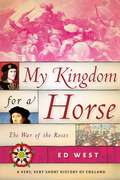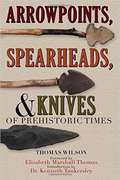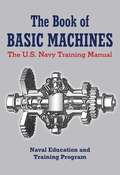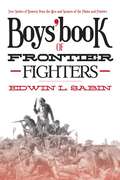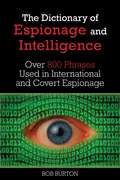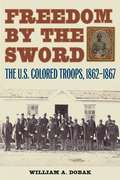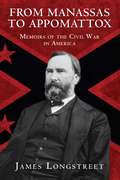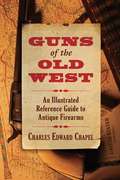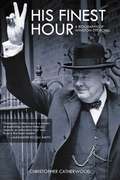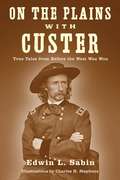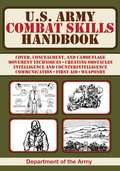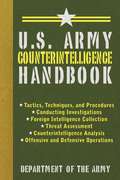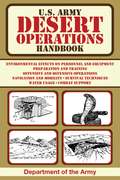- Table View
- List View
Hitler's Gray Wolves: U-Boats in the Indian Ocean
by Lawrence PatersonNext to nothing has been written about the U-boat war in the Indian Ocean. This is the story of a forgotten campaign. The battle began in August 1943, when a German submarine arrived in the Malaysian harbor of Georgetown. In total, nearly forty U-boats were assigned to penetrate the Indian Ocean, serving alongside troops of the occupying Imperial Japanese forces. The Japanese allowed U-boats to use Malaysia as an operational station. From that base, they mixed with Japanese forces on a hitherto unseen scale: a move which spread the U-boat war throughout the vast Indian Ocean and into the Pacific. Success in this theater of war held a real chance to swing the tide of battle in North Africa in favor of Rommel, but the Germans essentially did too little too late. The joint action also gave U-boats the opportunity to penetrate the Pacific Ocean for the first time, attacking shipping off the Australian coast and hunting off New Zealand. Plans were even afoot for an assault on American supply lines. The cooperation' also brought into stark relief the fundamental differences of German and Japanese war aims. After the crews of Italian supply submarines joined the Germans and Japanese, relations between the fighting men of the three main Axis powers were often brutal and almost constantly turbulent. Stories of U-boats laden with gold and treasure stem almost exclusively from boats destined to and returning from Japanese-controlled Malaysia, laden with material exchanged between the two major partners of the Triple Axis Alliance.
Nazi Spymaster: The Life and Death of Admiral Wilhelm Canaris
by Gerhard L. Weinberg Michael MuellerAdmiral Wilhelm Canaris was the head of the Abwehr?Hitler's intelligence service?from 1935 to 1944. Initially a supporter of Hitler, Canaris came to vigorously oppose his policies and practices and worked secretly throughout the war to overthrow the regime. Near the end of the war, secret documents were discovered that implicated Canaris and hinted at the extent of the activities conducted by Canaris's Abwehr against the Hitler regime, and in 1945 Canaris was executed as a national traitor. But Canaris left little in the way of personal documents, and to this day he remains a figure shrouded in mystery. Drawing on newly available archival materials, Mueller investigates the double life of this legendary and enigmatic figure in the first major biography of Canaris to be published in German.
Beachhead Assault: The Combat History of the Royal Naval Commandos in World War II
by David LeeThe Royal Naval Commandos had one of the most dangerous and the most important tasks of any in World War II - they were first on to the invasion beaches and they were the last to leave. Formed in 1941 as the Royal Naval Beach Parties, many lost their lives in the Dieppe raid. After Dieppe they became fully fledged fighting commandos with their legendary Fairbairn Sykes commando knives, organized into units from a commando through to the all Canadian W Commando. Under their officers who were designated as Beachmasters, the Royal Naval Commandos led the way in on the beaches as part of the allied landings in Madagascar, Dieppe, North Africa, Pantelleria, Sicily, Salerno, the Volturno River, Anzio, Arakan, D-Day, Elba, Walcheren and Commachio. Their work on the beaches was crucial to the success of the allied invasions. After the war the Royal Naval Commandos were disbanded and forgotten and their wartime role was given to the Royal Marines.The personal accounts of Royal Naval Commandos contained in this book tell the story of a remarkable but little-known group of men, ensuring that their legacy will not be forgotten.
The 12th Man: A WWII Epic of Escape and Endurance
by Astrid Karlsen Scott Tore HaugThe book that inspired the international film of the same name. "I remember reading We Die Alone in 1970 and I could never forget it. Then when we went to Norway to do a docudrama, people told us again and again that certain parts were pure fiction. Since I was a Norwegian that was not good enough; I had to find the truth. I sincerely believe we did,” writes author Astrid Karlsen Scott.The 12th Man is the true story of Jan Baalsrud, whose struggle to escape the Gestapo and survive in Nazi-occupied Norway has inspired the international film of the same name. In late March 1943, in the midst of WWII, four Norwegian saboteurs arrived in northern Norway on a fishing cutter and set anchor in Toftefjord to establish a base for their operations. However, they were betrayed, and a German boat attacked the cutter, creating a battlefield and spiraling Jan Baalsrud into the adventure of his life. The only survivor and wounded, Baalsrud begins a perilous journey to freedom, swimming icy fjords, climbing snow-covered peaks, enduring snowstorms, and getting caught in a monstrous avalanche. Suffering from snowblindness and frostbite, more than sixty people of the Troms District risk their lives to help Baalsrud to freedom. Meticulously researched for more than five years, Karlsen Scott and Haug bring forth the truth behind this captivating, edge-of-your-seat, real-life survival story.
Hunting Hitler: New Scientific Evidence That Hitler Escaped Nazi Germany
by Jerome R. CorsiIn 2009, three US professors with access to Adolf Hitler’s alleged remains startled the world with scientific DNA proof that the skull and bones that Russia had claimed since the end of World War II were Hitler’s actually belonged to a middle-aged woman whose identity remains unknown. This announcement has rekindled interest in the claim made by Joseph Stalin, maintained to the end of his life, that Hitler got away. The truth is that no one saw Hitler and Eva Braun die in the bunker in Berlin on April 30, 1945. No photographs were taken to document claims Hitler and Evan Braun committed suicide. Hitler’s body was never recovered. No definitive physical evidence exists proving Hitler died in the bunker in Berlin. Dr. Jerome Corsi explores the historical possibility that Hitler escaped Nazi Germany at the end of World War II. FBI and CIA records maintained at the National Archives indicate that the US government took seriously reports at the end of World War II that Hitler had escaped to Argentina. More recent evidence suggests Hitler may have fled to Indonesia, where he married and worked at a hospital in Sumbawa. Even the chief of the US trial counsel at Nuremburg, Thomas J. Dodd, was quoted as saying, "No one for sure can say Adolf Hitler is dead.” Putting massive amounts of evidence and research under a critical eye, Dr. Corsi shows that perhaps modern history’s most tantalizing question has yet to be definitively answered: Did Hitler escaped Nazi Germany at the end of World War II to plot revenge and to plan the rise of the Fourth Reich? Skyhorse Publishing, as well as our Arcade imprint, are proud to publish a broad range of books for readers interested in history—books about World War II, the Third Reich, Hitler and his henchmen, the JFK assassination, conspiracies, the American Civil War, the American Revolution, gladiators, Vikings, ancient Rome, medieval times, the old West, and much more. While not every title we publish becomes a New York Times bestseller or a national bestseller, we are committed to books on subjects that are sometimes overlooked and to authors whose work might not otherwise find a home.
Prevail: The Inspiring Story of Ethiopia's Victory over Mussolini's Invasion, 1935-1941
by Jeff Pearce Richard PankhurstIt was the war that changed everything, and yet it’s been mostly forgotten: in 1935, Italy invaded Ethiopia. It dominated newspaper headlines and newsreels. It inspired mass marches in Harlem, a play on Broadway, and independence movements in Africa. As the British Navy sailed into the Mediterranean for a white-knuckle showdown with Italian ships, riots broke out in major cities all over the United States.Italian planes dropped poison gas on Ethiopian troops, bombed Red Cross hospitals, and committed atrocities that were never deemed worthy of a war crimes tribunal. But unlike the many other depressing tales of Africa that crowd book shelves, this is a gripping thriller, a rousing tale of real-life heroism in which the Ethiopians come back from near destruction and win.Tunnelling through archive records, tracking down survivors still alive today, and uncovering never-before-seen photos, Jeff Pearce recreates a remarkable era and reveals astonishing new findings. He shows how the British Foreign Office abandoned the Ethiopians to their fate, while Franklin Roosevelt had an ambitious peace plan that could have changed the course of world history—had Chamberlain not blocked him with his policy on Ethiopia. And Pearce shows how modern propaganda techniques, the post-war African world, and modern peace movements all were influenced by this crucial conflict—a war in Africa that truly changed the world.Skyhorse Publishing, as well as our Arcade imprint, are proud to publish a broad range of books for readers interested in history--books about World War II, the Third Reich, Hitler and his henchmen, the JFK assassination, conspiracies, the American Civil War, the American Revolution, gladiators, Vikings, ancient Rome, medieval times, the old West, and much more. While not every title we publish becomes a New York Times bestseller or a national bestseller, we are committed to books on subjects that are sometimes overlooked and to authors whose work might not otherwise find a home.
Hacking ISIS: How to Destroy the Cyber Jihad
by Malcolm Nance Christopher SampsonThis book is written by two of the leading terrorist experts in the world - Malcolm Nance, NBC News/MSNBC terrorism analyst and Christopher Sampson, cyber-terrorist expert. Malcolm Nance is a 35 year practitioner in Middle East Special Operations and terrorism intelligence activities. Chris Sampson is the terrorism media and cyber warfare expert for the Terror Asymmetric Project and has spent 15 years collecting and exploiting terrorism media. For two years, their Terror Asymmetrics Project has been attacking and exploiting intelligence found on ISIS Dark Web operations.Hacking ISIS will explain and illustrate in graphic detail how ISIS produces religious cultism, recruits vulnerable young people of all religions and nationalities and disseminates their brutal social media to the world.More, the book will map out the cyberspace level tactics on how ISIS spreads its terrifying content, how it distributes tens of thousands of pieces of propaganda daily and is winning the battle in Cyberspace and how to stop it in its tracks.Hacking ISIS is uniquely positioned to give an insider’s view into how this group spreads its ideology and brainwashes tens of thousands of followers to join the cult that is the Islamic State and how average computer users can engage in the removal of ISIS from the internet.
Marcel's Letters: A Font and the Search for One Man's Fate
by Carolyn PorterFinalist for the 2018 Minnesota Book AwardA graphic designer’s search for inspiration leads to a cache of letters and the mystery of one man’s fate during World War II.Seeking inspiration for a new font design in an antique store in small-town Stillwater, Minnesota, graphic designer Carolyn Porter stumbled across a bundle of letters and was immediately drawn to their beautifully expressive pen-and-ink handwriting. She could not read the letters-they were in French-but she noticed all of them had been signed by a man named Marcel and mailed from Berlin to his family in France during the middle of World War II.As Carolyn grappled with designing the font, she decided to have one of Marcel’s letters translated. Reading it opened a portal to a different time, and what began as mere curiosity quickly became an obsession with finding out why the letter writer, Marcel Heuzé, had been in Berlin, how his letters came to be on sale in a store halfway around the world, and, most importantly, whether he ever returned to his beloved wife and daughters after the war.Marcel’s Letters is the incredible story of Carolyn’s increasingly desperate search to uncover the mystery of one man’s fate during WWII, seeking answers across Germany, France, and the United States. Simultaneously, she continues to work on what would become the acclaimed P22 Marcel font, immortalizing the man and his letters that waited almost seventy years to be reunited with his family.
George Washington's Surprise Attack: A New Look at the Battle That Decided the Fate of America
by Phillip Thomas TuckerExtensively researched and superbly argued in Tucker’s compelling narrative, this in-depth examination of George Washington’s 'military miracle’ at the Battle of Trenton unquestionably confirms the vital importance of that stunning victory.” -Jerry D. Morelock, PhD, editor in chief at Armchair GeneralLike many historical events, the American Revolution is sometimes overlooked, ignored, or minimized by historians because of common shrouding in romantic myth or interference from stubborn stereotypes. Here historian Phillip Thomas Tucker provides an in-depth look at the events of the Battle of Trenton, weeding out fiction and legend and presenting new insights and analysis. Stories from many forgotten individuals of the war, including officers and soldiers from both sides, bring to life the Continental Army’s desperate circumstances and shocking victory. Myths that Tucker debunks include the Hessians’ slovenly drunkenness, Washington acting alone in creating the attack strategy, and Rall’s incompetence as a leader largely contributing to his troops’ defeat.By exploring the forgotten aspects of one of America’s most famous battles, revealing Trenton’s story proves to be even more fascinating. In the end, America’s founding was nothing short of miraculous, and no chapter of America’s story was more miraculous than Washington’s improbable success at the battle of Trenton, where America’s fate was decided to almost everyone’s amazement on a dark, snowy morning.Skyhorse Publishing, as well as our Arcade imprint, are proud to publish a broad range of books for readers interested in history--books about World War II, the Third Reich, Hitler and his henchmen, the JFK assassination, conspiracies, the American Civil War, the American Revolution, gladiators, Vikings, ancient Rome, medieval times, the old West, and much more. While not every title we publish becomes a New York Times bestseller or a national bestseller, we are committed to books on subjects that are sometimes overlooked and to authors whose work might not otherwise find a home.
1066 and Before All That: The Battle of Hastings, Anglo-Saxon and Norman England: A Very, Very Short History of England (A Very, Very Short History of England)
by Ed WestA riveting account of the most consequential year in English history, marked by bloody conflict with invaders on all sides.1066 is the most famous date in history, and with good reason, since no battle in medieval history had such a devastating effect on its losers as the Battle of Hastings, which altered the entire course of English history.The French-speaking Normans were the pre-eminent warriors of the 11th century and based their entire society around conflict. They were led by William 'the Bastard' a formidable, ruthless warrior, who was convinced that his half-Norman cousin, Edward the Confessor, had promised him the throne of England. However, when Edward died in January 1066, Harold Godwinson, the richest earl in the land and the son of a pirate, took the throne . . . . this left William no choice but to forcibly claim what he believed to be his right. What ensued was one of the bloodiest periods of English history, with a body count that might make even George RR Martin balk.Pitched at newcomers to the subject, this book will explain how the disastrous battle changed England—and the English—forever, introducing the medieval world of chivalry, castles and horse-bound knights. It is the first part in the new A Very, Very Short History of England series, which aims to capture the major moments of English history with humor and bite.
1215 and All That: Magna Carta and King John
by Ed West1215 is one of the most famous dates in English history, and with good reason, since it marks the signing of the Magna Carta by King John and the English barons, which altered the entire course of English and world history.John Lackland was born to King Henry II and Eleanor, Duchess of Aquitane in December, 1166; he was the youngest of five sons. However, he unexpectedly became the favored heir to his father after a failed rebellion by his older brothers in 1173. He became king in 1199, though his reign was tumultuous and short. After a brief peace with Phillip II of France, war broke out again in 1202 and King John lost most of his holdings on the continent. This, coupled with unpopular fiscal policies and treatment of nobles back home, led to conflict upon his return from battle. Buffeted from all sides, King John was pushed in 1215 to sign along with his barons the Magna Carta, a precursor to constitutional governance. But both sides failed to uphold the agreements terms and conflict quickly resumed, leading to John’s untimely death a year later to dysentery.Pitched at newcomers to the subject, 1215 and All That will explain how King John’s rule and, in particular, his signing of the Magna Carta changed England—and the English—forever, introducing readers to the early days of medieval England. It is the third book in the acclaimed A Very, Very Short History of England series, which captures the major moments of English history with humor and bite.
England in the Age of Chivalry . . . And Awful Diseases: The Hundred Years' War and Black Death
by Ed WestA revealing glimpse into the tumultuous history of England’s medieval period, full of knights in shining armor and terrible peasant suffering. Covering the violent and disease-ridden period between 1272 to 1399, England in the Age of Chivalry. . . And Awful Diseases covers the events, personages and ideas most commonly known as "medieval". This includes Geoffrey Chaucer, the Peasants revolt, the Scottish wars of independence, the Great Famine of 1315, the Black Death and the 100 Years War. Central to this time is King Edward III, who started the 100 Years War and defined the concept of chivalry, including England's order of the garter. His legacy continues to shape our view of England’s history and is crucial in understanding the development of Europe.
My Kingdom for a Horse: The War of the Roses (Very, Very Short History of England)
by Ed WestFrom William Shakespeare's series of history dramas to Sir Walter Scott and George R.R. Martin's A Song of Ice and Fire, not to mention the smash-hit TV show Game of Thrones, the British civil war of 1455 to 1485 has inspired writers more than any other. Ed West's My Kingdom for a Horse illuminates the bloody war fought for thirty long years between the descendants of King Edward III in a battle for the throne. Named after the emblems used by the two leading families, the Houses of York and Lancaster, the title of the conflict gives it a romantic feel that probably wasn't as apparent to those on the battlefield having swords shoved into their eyes. And, for all the lovely heraldry and glamorous costumes of the era, the war saw the complete breakdown of the medieval code of chivalry in which prisoners were spared, which makes it even better drama. In 1460-61 alone, twelve noblemen were killed in the field and six were beheaded off it, removing a third of the English peerage. Written in the spirit of a black comedy, My Kingdom for a Horse is an ideal introduction for anyone interested in one of history's most insane wars. Featuring some of history's most infamous figures, including the insane King Henry VI, whose madness triggered the breakdown, and the wicked Richard III, who murdered his young nephews to take the throne, this fifth entry in West's A Very, Very Short History of England series is a must for fans of British history.
Arrowpoints, Spearheads, and Knives of Prehistoric Times
by Elizabeth Marshall Thomas Thomas Wilson Kenneth Barnett TankersleyA thorough history of the weapons and tools our prehistoric ancestors used to survive, this book reveals a world that will fascinate anyone interested in outdoor skills, ancient weapons, or anthropology. Thomas Wilson explains the many types of arrowheads, spears, and knives used by the peoples of the Paleolithic period across Western Europe and the early days of America. He details the materials from which these tools were made, how and where they were manufactured, and the purposes for which they were crafted—from hunting and cutting to scraping and grinding. Lavishly illustrated with hundreds of drawings of these tools, including microscopic details of the flint and other stones from which they were crafted, this is a rare look into what seems like mankind's not-so-distant past.
The Book of Basic Machines: The U.S. Navy Training Manual
by U. S. NavyHave you ever wondered why levers and pulleys make it easy to lift heavy objects? Or thought about what it is that makes a combustion engine work?The Book of Basic Machines will give you the information you need to understand key concepts, techniques, components, and much more. Designed and prepared by the Naval Education and Training Program Development Center for naval training, and taught widely in technical school across the country, the manual covers the theory and application of many of the most important mechanical ideas. Concepts build effortlessly from one chapter to the next. Clear explanations, illuminating examples, and over 200 skillfully rendered diagrams, cross-sections, and illustrations make it remarkably easy for readers of any level to understand the fascinating inner-workings of basic machines. The Book of Basic Machines is an invaluable resource for mechanical engineering students looking to learn the basics, working engineers wanting to brush up on some theory, or hobbyists who simply want to know how things work. Simply put, this book is required reading for anyone interested in machines. From the basics of simple levers to the principles of the internal combustion engine, The Book of Basic Machines covers every aspect of basic machinery.
Boys' Book of Frontier Fighters: True Stories of Bravery from the Men and Women of the Plains and Prairies
by Edwin L. SabinA classic of historical literature, Boys’ Book of Frontier Fighters is a thrilling collection of stories that cover the legacy of American fighters and their successes in defending themselves and their country. With stories spanning from the late 1600s to the 1800s, Sabin depicts in detail the willpower and bravery of the men and women who fought for America; from its founding as a country to the days of the Wild West. From the plains and prairies to the mountains and forests, enjoy tales of the people who fought to make this great country what it is today.With masterful prose, Edwin L. Sabin paints a picture of the early days of America and the warriors who took it upon themselves to defend this country. Their sacrifices are inspiring and exciting—and a dynamic part of our country’s history. Boys’ Book of Frontier Fighters shares a part of America’s past that should be read, celebrated, and never forgotten.
Dictionary of Espionage and Intelligence: Over 800 Phrases Used in International and Covert Espionage
by Bob Burton W. E. GriffinFrom Bob Burton - a former member of both the civilian and military intelligence communities and America’s most feared bounty hunter - comes the complete lexicon of over 800 terms and meanings used in international and covert espionage. Dictionary of Espionage and Intelligence includes the most up-to-date terminology of special operations from A to Z, including: Breaktime: The time it takes to break down he resistance level of a subject in an interrogation of a brutal nature - usually 5-7 hours Hero Project: A project, operation, or extraction considered too dangerous, with only the most skilled personnel able to pull it off. Cake or Death: An unspoken but soon-realized ultimatum that a prisoner of the spook war understands as his personal fate - cooperate or die.Compiled by a man who knows covert action and clandestine warfare from the inside out, Dictionary of Espionage and Intelligence is a perfect compendium of the secret language spoken by those who fight the silent war.
Freedom by the Sword: The U.S. Colored Troops, 1862-1867
by William A. DobakThe Civil War changed the United States in many ways—economic, political, and social. Of these changes, none was more important than Emancipation. Besides freeing nearly four million slaves, it brought agricultural wage labor to a reluctant South and gave a vote to black adult males in the former slave states. It also offered former slaves new opportunities in education, property ownership—and military service. From late 1862 to the spring of 1865, as the Civil War raged on, the federal government accepted more than 180,000 black men as soldiers, something it had never done before on such a scale.Known collectively as the United States Colored Troops and organized in segregated regiments led by white officers, some of these soldiers guarded army posts along major rivers; others fought Confederate raiders to protect Union supply trains, and still others took part in major operations like the Siege of Petersburg and the Battle of Nashville. After the war, many of the black regiments took up posts in the former Confederacy to enforce federal Reconstruction policy. Freedom by the Sword tells the story of these soldiers' recruitment, organization, and service. Thanks to its broad focus on every theater of the war and its concentration on what black soldiers actually contributed to Union victory, this volume stands alone among histories of the U.S. Colored Troops.
From Manassas to Appomattox: Memoirs of the Civil War in America
by James LongstreetThe reputation of Confederate General James Longstreet—second-in-command to and intimate friend of Robert E. Lee—has undergone dramatic swings over the course of history. Revered by his men and respected by his fellow officers during the Ameri
Guns of the Old West: An Illustrated Reference Guide to Antique Firearms
by Charles Edward ChapelWritten by one of the foremost firearms experts of the twentieth century, Charles Edward Chapel’s Guns of the Old West is an exhaustively researched document that not only boasts a significant collection of antique Western guns, but also categorizes the firearms into easy-to-reference sections.Starting with an introductory chapter on the origins of guns and their earliest uses on the frontier, Chapel covers everything from muskets to rifles, pistols to revolvers, and shotguns to martial arms. Three whole chapters are dedicated to the rise and fall of the famous Deringer pistol. And as much as Guns of the Old West is an encyclopedic reference manual, it’s also fascinating historical literature that frames the world in which these guns were used. Buffalo guns and hunters are covered, along with martial arms of the post–Civil War era. The gun collection of famous collector and hunter President Theodore Roosevelt is given its own chapter.Illustrated with nearly 500 illustrations, as well as important artwork from the Western period from artists such as Frederic Remington, Guns of the Old West is an essential work for gun collectors and American history enthusiasts.
His Finest Hour: A Biography of Winston Churchill (Brief History Ser.)
by Christopher CatherwoodWho was Winston Churchill? Even fifty years after his death, he is one of the most iconic figures in British history. As a young man he was a maverick journalist; his many positions in politics before 1940 marked him as a courageous but foolhardy man. Yet it is Churchill’s record in war, which has recently been questioned, that confirms his genius as a military commander and national leader—someone who understood the dangers of Nazi Germany before 1939 and someone uniquely capable to lead the empire through the turmoil of the Second World War. Christopher Catherwood argues that it was Churchill’s stand in 1940-41 that saved Britain and that only he was able to bring together the allies that eventually defeated Hitler in 1945. Catherwood has produced a challenging yet lively reassessment of the life and career of Winston Churchill, lion of British history and flawed hero.
On the Plains with Custer: Tales from Before the West Was Won
by Edwin L. Sabin Charles H. StephensThis historical western was written before Custer was known as General, a time when those who knew and marched with Custer were still alive. Edwin L. Sabin tells the story of a man who was “as great in peace as in war” from the perspective of Ned Fletcher, a bugler who served under the general. From the westward expansion of Northern Pacific Railway, to Custer’s encounters with Sitting Bull and the famous Battle of the Little Bighorn, this account of Custer’s adventures is told in an engaging manner and is based upon extensive research. Sabin muses on what really happened at the Battle of Little Bighorn and weaves us a tale that seamlessly combines entertaining storytelling with factual accuracy.While there were no survivors from Custer’s Last Stand (or Battle of the Greasy Grass, as it is referred to by Native Americans), the author was able to piece out this quintessential American story from records, Mrs. Custer’s writings, and news articles from that time. With the help of the dutiful young soldier, Ned Fletcher, this story embodies what Sabin is best known for—western tales that imbue lessons in good and evil.
U.S. Army Combat Skills Handbook (US Army Survival)
by ArmyRecognizing that “wars are not won by machines and weapons but by the soldiers who use them,” this comprehensive manual not only informs the reader of the timeless skills necessary to survive on the battlefield, but also instructs the soldier on how to perform and execute these tasks to succeed in combat. From concealment and mobility to first aid and personal care, you too can possess the knowledge armed service people are equipped with so they can do their jobs properly and confidently. This informative and exhaustive guide draws upon the real-life experiences of soldiers who have faced warfare and lived in combat zones. Practical and explicit instructions on team formation, proper positioning for offensive and defensive maneuvers, and handling of equipment and weaponry are thoroughly explained. Also included is advice on life-saving CPR and wound-care techniques; sections on combat intelligence and nuclear, biological, and chemical warfare; and appendices covering mines, demolitions, obstacles, combat in urban areas, tracking, and evasion and escape. Illustrations throughout the book depict various field scenarios that soldiers face in a war zone. See what it takes to perform, inspire, and lead in the U.S. Army!
U.S. Army Counterintelligence Handbook (Us Army Survival Ser.)
by Department of the ArmyThe life of a counterintelligence (CI) operative has been immortalized in film and novels as being filled with glamour and excitement. While international travel, heroism, and danger are all part of the job description, the fundamentals of counterintelligence are discipline, skill, and—well—intelligence. CI operations include conducting investigations, offensive and defensive operations, security and vulnerability analyses, and intelligence collection in peace and at all levels of conflict to support command needs. This guide serves to inform commanders, agents, and analysts on how to identify, neutralize, and exploit any foreign attempts to conduct operations against the U.S. Army. Find out how CI operatives combat terrorism, create battlefield deception, and inform all echelons of combat of both real and potential threats from the U.S. Army's own guide to counterintelligence. The tactics, techniques, and procedures (TTP) outlined are the same instructions that CI personnel follow in the field. As the world becomes more interconnected and as technological advances continue to be made, proper CI techniques are exceedingly critical to the protection of the U.S. Army. Counterintelligence is not just the subject for an entertaining story, it is how peacekeeping, humanitarian, and counter-drug operations are carried out in this globalized world.
U.S. Army Desert Operations Handbook (US Army Survival)
by ArmyImagine working all day in 100-degree plus temperatures under constant life-threatening circumstances, sometimes relying only on the negligible amount of hydration from a cactus you’ve dug up. This is the life of a U.S. Army soldier in places like Iraq, Afghanistan, and elsewhere, which is why the U.S. Army Desert Operations Handbook is a vital reference for survival in one of the harshest environments in the world. This official guide covers how to plan and conduct operations, how the environment affects personnel and equipment, and most importantly, how to survive and receive supplies in the desert. The obvious problems with extreme temperatures are water location and mobility. However, from handling and caring for firearms to operating and fueling a tank, the entire game changes in the dry, sandy desert conditions. The skills in this guide are taken from lessons learned in real combat situations. Success in desert operations requires the ability to adapt with constant terrain and temperature changes, which are often drastic within the same twenty-four–hour period. All the while, the soldier must be able to move within a unit without being visible to unfriendly groups. This combat-tested manual is sure to arm anyone with the skills necessary to survive in the desert.
